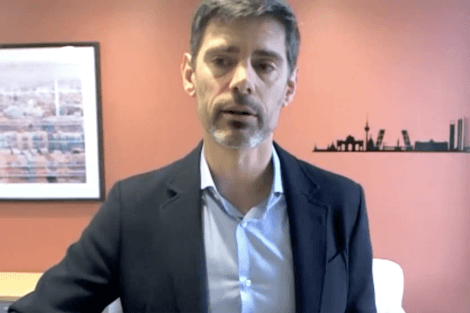May 12, 2022 – Determining the factors that cause disease or other health conditions—versus the factors that are just associated with those conditions— has long challenged epidemiologists. But knowing the causes can be vital to developing effective medical treatments and policy interventions. Three epidemiologists discussed the issue at the 6th Cutter Symposium, held virtually on May 6, 2022 at Harvard T.H. Chan School of Public Health.
Cutter lectures and symposia date back to 1912, established through a bequest from Harvard Medical School graduate John Clarence Cutter. The lecture series, hosted by the Department of Epidemiology, is the oldest in epidemiology and preventive medicine worldwide, said Albert Hofman, chair of the department, in opening remarks.
Miguel Hernán, Kolokotrones Professor of Biostatistics and Epidemiology and director of CAUSALab at Harvard Chan School and one of the speakers, said, “We ask epidemiologists to estimate casual effects to learn what works to improve health. Doctors, patients, and policy makers … have to know what works in order to make decisions based on evidence.” While he noted that experimental trials are the gold standard in causal inference, they are often time-consuming and expensive, and cannot ethically be applied in all situations. On the other hand, he said, some experts have questioned whether causes can be accurately gleaned from observational data—especially given several recent high-profile examples of conclusions drawn from observational studies that have been proven wrong.
Hernán, who is principal investigator for the HIV-CAUSAL collaboration, which compares the effectiveness of different treatments for persons with HIV, defended the use of observational studies as sometimes the only way to answer certain public health questions. He argued that the studies that have proved wrong were problematic mostly because of poorly applied methods rather than the observational nature of the studies themselves. He said that randomized trials and observational studies can complement one another. “We can use the randomized trials as benchmarks for the observational studies, and we can use the observational studies to extend the results of the trials [and] improve the design of [future] trials,” he said.
Another speaker, University of Bristol epidemiologist George Davey Smith, discussed how public health researchers can examine ubiquitous factors in the environment that affect almost everyone in a population and that can increase risk of cancer and other diseases. Experts have used a variety of techniques—including time trends, geographical differences, and migrant studies—to better understand the role of smoking, diet, and other factors in the development of disease, he said. He also suggested other strategies for uncovering ubiquitous disease causes, including large birth cohort studies that follow parents and offspring, and studies that compare communities with low incidence of a particular disease with communities with high incidence, taking into account genetic data to better understand why some individuals develop disease while others don’t.
In a third talk, University of California, San Francisco epidemiologist Maria Glymour suggested some ways that observational studies could be improved to better determine causal inference. Most studies use existing data and control for confounding factors in order to isolate potential causes. A less often used, but potentially powerful tool, however, is to use an unrelated variable to essentially turn an observational study into a randomized trial. She explained that researchers could design low-cost randomized trials within large populations by assigning treatments based on arbitrary factors—such as sending a letter encouraging people with cognitive decline born on odd days of the month to adopt a new FDA-approved Alzheimer’s treatment.
Glymour said she hopes that the data revolution will help drive discoveries in causal inference. “The causal revolution is not done,” she said. “We have yet to take full advantage of causal frameworks.”
